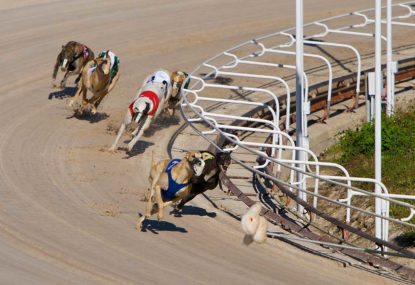TWO GOOD! Zahra wins back-to-back Melbourne Cups on Without a Fight as three horses pull up lame
Without a Fight completed the rare Caulfield Cup-Melbourne Cup double on Tuesday as star jockey Mark Zahra went back-to-back in the big one after…

The long, drawn out political process for greyhound racing in NSW is nearing completion. Last week the government passed legislation that almost entirely mirrors the recommendations of the Greyhound Industry Reform Panel, headed by Morris Iemma.
Almost.
There are many details to these reforms, including splitting the current GRNSW into separate regulatory and commercial bodies with a pot of money, around $8 million a year, available for the reforms.
At this point I should disclose that the CEO of the Greyhound Breeders, Owners and Trainers Association (GBOTA), Brenton Scott was a member of the Greyhound Industry Reform Panel. I am a member of the GBOTA and my mother is a Director of the GBOTA.
I have previously written on how money from two sources, the intercode agreement and the tax parity bill should have been diverted to welfare and integrity for greyhound racing.
The Government has basically taken one source, tax parity, claimed they’re picking up the bill and used that to pay for the new integrity body, with more slated for track improvements.
While better late than never, many of the necessary reforms including the expansion of the greyhound adoption program, tracking of greyhounds, regulations around the retirement of greyhounds and inspection of facilities have already happened.
And these changes have, by and large, been actively shaped by the vast majority of participants who have not just grudgingly accepted change. The Government has not addressed all the problems it could have, but it is nevertheless a welcome change in the structure of greyhound racing that leaves me feeling cautiously optimistic for the future.

Although how that future pans out, and how much influence the legislation has on it, is difficult to predict. The longstanding gripe of greyhound racing participants has been the share of TAB turnover that is passed to the code. The intercode agreement shares the revenue at 70 per cent to thoroughbred racing, 17 per cent to harness racing and 13 per cent to greyhound racing.
According to the Australian Racing Factbook 2015-16, the income generated is 69 per cent by the thoroughbreds, 10 per cent by harness and 20 per cent by greyhound racing.
When the NSW Government reduced the tax paid on TAB turnover, it shared it between the codes at 77.3 per cent to the thoroughbreds, 12.7 per cent to harness and ten per cent to the greyhounds. The Government did not change any of these sources of funds, and I very much believe they should have, however the shortfall from the tax parity is a similar amount of money as the package that has passed the parliament.
One distinct advantage for this arrangement, as opposed to changing the intercode and tax harmonisation monies to market share, is that the funding is guaranteed. The trouble for both of those sources of income is that they are derived from money bet on the TAB, which has been stagnant for years as they face competition from online bookmakers and is likely to continue to either stagnate or decline.
The second problem is that greyhound racing would need to maintain their share of TAB gambling revenues. Although I doubt they would drop below the intercode, I doubt they will stay at the same level.
The last 18 months have seen breeding numbers first reduce and then drop off a cliff in NSW, with the initial effects of reform and then Baird’s ban having been profound.
Consider this, for the last 12 months that we have whelping data for, 458 litters have been bred in NSW. The corresponding period of 2014-2015 there were 1197 litters, more than two and a half times as many.
That’s nearly a drop of two-thirds, an end to business as usual if ever there was one. At some point late this year or at best early next year it will simply be inconceivable that the volume of greyhound racing that currently occurs will continue.
While the new regulatory body couldn’t care less about this, and breeding quotas were wisely rejected for this reason, but this will be the reality for the commercial body and will have to deal with the opportunities it presents and the problems it causes.
But with the same amount of money coming in, possibly more from the corporates and fewer greyhounds to spread the money around, the Government are banking on greyhound racing participants seeing a material improvement in their fortunes, hoping that their share of TAB turnover drops somewhat to take the remaining heat out of the issue while also addressing the welfare and integrity issues.
When the funding runs out in five years, however, one would hope the Government of the day permanently addresses the problems that past ones have caused.